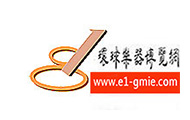普化尺八边棱音气鸣乐器。日本最有代表性的民族管乐器之一。尺八原是我国唐代形如洞箫的竖吹笛,由宫廷乐工吕才创制十二支一套的竖笛,被宫廷推荐用作律器,因其中的标准笛为一尺八寸,故称“尺八”。
普化是唐宣宗时(公元847-859年)的高僧,他资性异人,出言佯狂,行为简放,遇人便摇铎(铃)高唱:“明头来明头打,暗头来暗头打,四面八方来旋风打,虚空来连架打。”他常常居无定所,时而歌舞,时而悲号。无欲恬淡,云游四方。普化的风范后来引起了一个叫张伯的居士的倾慕,自己力荐为普化弟子。因铜铎难得,就用尺八代替,称之为“虚铎”,用吹尺八来诵经。张伯的尺八曲“虚铎”传了十六代。到了张参这一代,日本僧人心地觉心于廉仓时代建长元年(1249年)来华,入杭州护国仁王禅寺修禅,因赞赏张参所吹尺八曲的清妙,宋代宝祐元年(1253年)由在日本的源心和尚介绍,于9月28日,向张参求学尺八。宝祐二年(1254年)心地觉心回日本,并将尺八的演奏技艺传授给了日本人寄竹和随他去日本的张参的徒弟,四名居士(国作-理正-法普-宗怒),传承至今。
FukeShakuhachi: Vertical Flute
Edged tone aerophone. One of the most typical traditional wind instrument of Japan, it was from the Chinese dongxiao, a kind of vertical flute, of the Tang Dynasty (618-907), which was created by a court musician named Lü Cai. Twelve as a series, it was used in the court as a standard measurement tool for temperament. The name was derived from the length of the standard type: 1 chi/shaku and eight-tenths ba/hachi. Some Chinese ninth-century references connect the instrument with a wandering Buddhist priest of high status named Puhua and one of his disciples Zhang Bo, who played the chiba for scripture chanting. The instrument was passed down for 16 generations until the year of 1253, when a Japanese Zen priest came to China to learn to play and brought it back home. In Japan the instrument and its performing techniques have continued to evolve up to the present.
未经允许不得转载:環球樂器博览网 » 日本-普化尺八 Fukeshakuhachi: Vertical Flute
 環球樂器博览网
環球樂器博览网

评论前必须登录!
登陆 注册